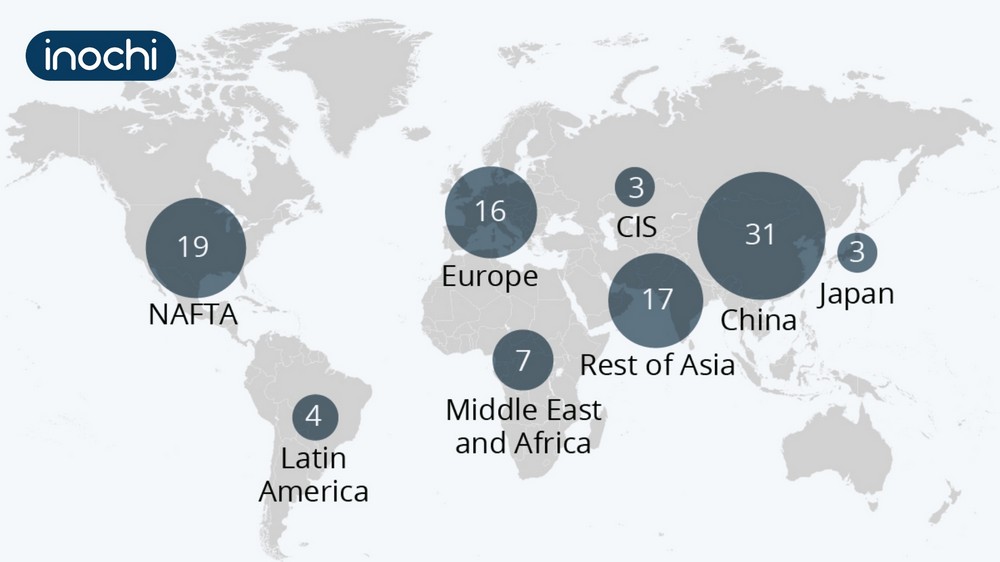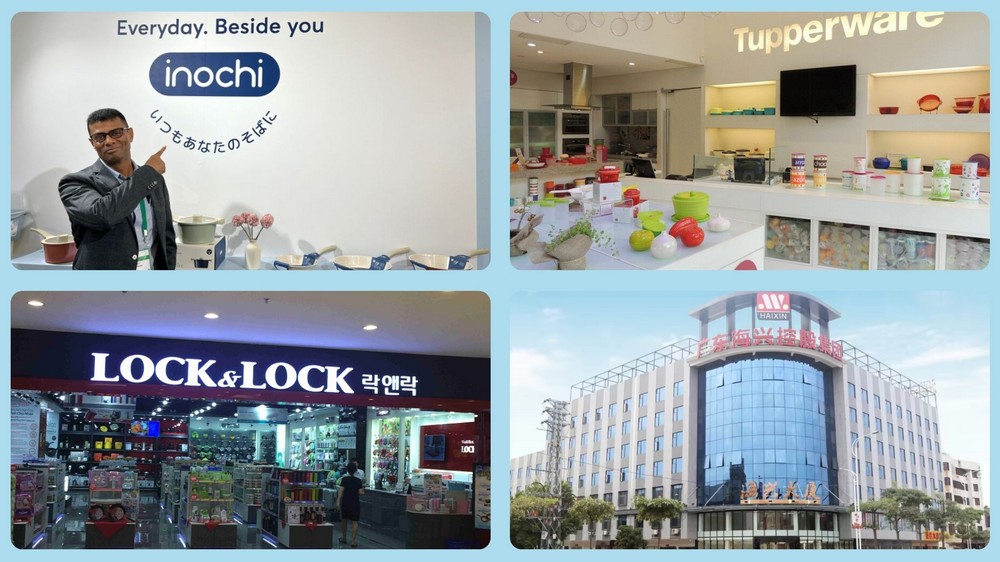When you think about household products, chances are a lot of them are made from plastic. Whether it’s your trusty Inochi Global or that colorful laundry basket, plastic has become a staple in our homes. In Asia, the plastic household products market is booming, and it’s fascinating to see how it’s evolved over the years. Let’s dive into the world of Asia plastic products and uncover what makes this industry tick, all without getting into the nitty-gritty of environmental issues.

1. A Brief History
The journey of plastic household products in Asia is quite a story. Back in the 1960s, plastic was seen as a novelty material. Fast forward to today, and plastic household products are everywhere. Asia is now a global leader in this market, contributing to more than 50% of the world’s plastic household product production.
In 2021, the market for plastic household products in Asia was valued at around $60 billion and is projected to reach $90 billion by 2027, growing at a CAGR of 6%. That’s a lot of bowls and storage bins!
2. Key Markets in the Region
So, which countries are making the biggest splash in the Asia plastic household products scene?
- China: The undisputed heavyweight, China is responsible for about 30% of all plastic household products produced globally. The country’s market for plastic household goods is expected to hit $35 billion by 2025.
- India: Rapid urbanization and a growing middle class mean that India is on the rise. The market of Asian plastic products in India is projected to grow from $10 billion in 2020 to about $15 billion by 2025.
- Japan: Known for its innovation, Japan’s market is valued at around $8 billion and is expected to grow steadily, driven by high-quality design and functionality.
- Moreover, several other countries are making significant strides in the plastics industry, particularly Vietnam, which is projected to experience a compound annual growth rate (CAGR) of 8.44% throughout the forecast period (2024 – 2029).

These markets are not just big; they’re also diverse, catering to a wide range of consumer needs. Each Asia plastic factory plays an important role in distributing plastic houseware to countries all over the world.
3. What Types of Products Are We Talking About?
Plastic household products come in various shapes and sizes. Here are some common categories:
- Storage Containers: From food storage to organizing your office supplies, these are a must-have. In 2022, the market for storage containers in Asia was valued at $10 billion.
- Utensils and Cookware: Plastic utensils are lightweight and durable. The market for this category is growing, with a projected value of $7 billion by 2025.
- Furniture: Yes, even furniture! Plastic furniture is popular for its affordability and versatility, with a market size of around $5 billion in Asia.

You’ve probably already known that polypropylene and polyethylene are the most commonly used materials in these products, thanks to their durability and ease of manufacturing.
4. What Do Consumers Want?
Consumer preferences are evolving, and it’s crucial to understand what drives their choices.
- Affordability: Price is a biggie. Many consumers are looking for budget-friendly options, especially in developing countries where disposable income is still growing.
- Durability: With busy lifestyles, people want products that last. High-quality plastic items that can withstand daily use are in high demand.
- Design and Aesthetics: Aesthetic appeal is increasingly important. Bright colors and modern designs attract consumers, especially younger generations.
A recent survey found that 70% of urban consumers prefer colorful and stylish plastic products over traditional designs as suitable plastic items in modern kitchens.
5. Major Players in the Market
Let’s not forget the companies that make all these fabulous products. Some of the leading brands in Asia include:
- Inochi Global: This emerging player from Vietnam specializes in high-quality, multifunctional plastic products that cater to modern households. With a focus on innovation and design, Inochi Global is quickly gaining traction in the market, appealing to both budget-conscious and design-savvy consumers.
- Tupperware: A household name known for its innovative designs and quality. Although founded in the US, with rapid development, Tupperware has also been successful in the Asian market.
- Lock & Lock: This South Korean brand has made a name for itself with airtight containers and stylish designs.
- Guangdong Haixing Plastic & Rubber Co., Ltd. from China specializes in a wide range of plastic houseware items, including storage containers and kitchen accessories.
- Muji is renowned for its minimalist design and high-quality plastic houseware products which is popular in Japan, focusing on functionality and simplicity.
- Pigeon is a popular manufacturer offering a variety of plastic kitchenware and storage solutions, known for their practicality and innovative designs.

These companies are not just fighting for market share; they’re also constantly innovating to stay relevant.
| In fact, among the four Asia leading companies in the plastic kitchenware sector, none of them fully meets all customer expectations, particularly in terms of affordability. Except for Inochi, this Vietnamese plastic manufacturer has optimized costs, resulting in significantly lower prices compared to the other three competitors.
So if you’re curious about our products or prices, take a tour to the Inochi Global website or contact us directly via WhatsApp at +84 83 214 8855. |
6. Innovations and Trends
Innovation is the name of the game in the plastic household products sector. Here are some trends to keep an eye on:
- Smart Solutions: With the rise of smart homes, products that integrate technology are gaining popularity. Think smart food containers that track freshness or app-connected organization systems.
- Multi-functional Products: Consumers love products that do double duty. For example, innovative food storage containers of Inochi Global can hold food and also serve as meal prep containers.
- Customization: Brands are beginning to offer customizable options, allowing consumers to choose colors, sizes, and designs that fit their personal style.
7. Trade Dynamics
Asia is not only a manufacturing hub but also a significant player in the trade of plastic household products. In 2021, Asia accounted for approximately 30% of global plastic household product exports. Countries like China and India are major exporters, while Japan imports many of its raw materials.
Key trading partners include the United States and countries in the European Union. Trade agreements, such as the Regional Comprehensive Economic Partnership (RCEP), are making it easier for these countries to exchange products and services, further boosting the market.

8. Future Projections
Looking ahead, the plastic household products market in Asia is set for continued growth. Analysts predict that the market will reach $90 billion by 2027, driven by rising consumer demand and ongoing innovation. Factors like urbanization, a growing middle class, and increasing disposable income will only fuel this growth.
Moreover, as e-commerce continues to expand, more consumers are shopping online for household products. In 2022, e-commerce sales of plastic household items in Asia reached $15 billion, and this number is expected to grow as online shopping becomes more prevalent.
Not only that, as environmentally friendly solutions are developed and widely adopted, people will feel more confident using plastic products without worrying about environmental issues.
9. FAQs
What are the key trends influencing the Asia plastic houseware market?
Key trends include the growing demand for eco-friendly and recyclable products, innovative designs, and the rise of e-commerce platforms facilitating easier access to a variety of houseware products.
How is the competitive landscape in the Asia plastic houseware market?
The market is highly competitive, with numerous local and international players. Companies are focusing on product innovation, branding, and sustainability to differentiate themselves.
What challenges does the Asia plastic houseware market face?
Challenges include environmental concerns related to plastic waste, regulatory pressures for sustainable practices, and competition from alternative materials such as glass and metal.
In conclusion, the Asia plastic household products market is a vital sector impacting daily life across the region. With ongoing growth driven by consumer demand for innovative and affordable products, key players like Inochi Global are evolving to meet changing preferences. As trends continue to shape this industry, the Asia plastic market remains essential to modern living, making it an exciting space to watch.





